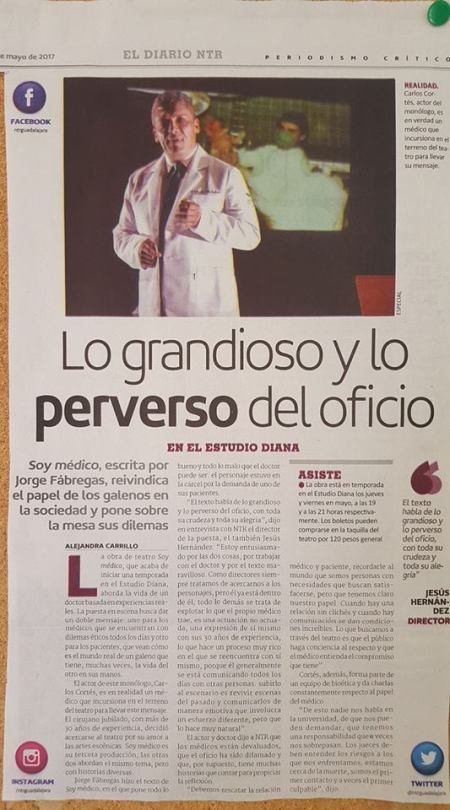 |
Transfusión masiva y manejo del paciente traumatizado: enfoque fisiopatológico del tratamiento Graciela Zunini-Fernández, Karina Rando-Huluk, Francisco Javier Martínez- Pelayo, Ara Lizeth Castillo-Trevizo
Cir Cir 2011;79:473-480
Resumen
La hemorragia masiva es una de las principales causas de muerte y paro cardiaco intraoperatorio. Su mortalidad varía entre 15 y 54%. La presencia de acidosis, hipotermia y coagulopatía son elementos de pronóstico ominoso. En esta revisión se describen las causas que perpetuán la hemorragia en el sangrado masivo, las particularidades del daño tisular controlado y no controlado, el valor de los exámenes de laboratorio para el diagnóstico de coagulopatía, y las guías actuales del manejo con líquidos y hemoderivados. La respuesta frente al sangrado requiere una adecuada comunicación del equipo quirúrgico con el banco de sangre, para así asegurar el suministro de los hemocomponentes adecuados en cantidad y calidad, instalación de medidas para evitar la hipotermia y disponibilidad de sistemas de infusión rápida. Palabras claves: Hemorragia masiva, cirugía, traumatismo, transfusión.
|
Transfusión en trauma
Víctor Hugo González Cárdenas
Rev Colomb Anestesiol 2012;40:287-92 - Vol. 40 Núm.4 DOI: 10.1016/j.rca.2012.05.017
Resumen
La transfusión masiva es considerada como pieza fundamental en el manejo agudo de la hemorragia masiva. Si bien los protocolos existentes no estandarizan su uso, sí recomiendan su aplicación oportuna y una dosificación ajustada al tipo de hemoderivado, una relación proporcionada entre hemocomponentes y coadyuvancia justa de medicamentos, así como técnicas que promuevan el control de la hemorragia y prevengan síndromes desencadenantes de muerte. Esta revisión no sistemática tiene como objetivo resumir los conceptos actuales sobre el manejo agudo de la hemorragia masiva relacionada con trauma desde una perspectiva no quirúrgica.La búsqueda de artículos se limitó a los últimos 10 años, y se realizó en bases de datos primarias y secundarias; todo ello terminó en una técnica de bola de nieve.
|
La puntuación de transfusión masiva como una ayuda de decisión para la reanimación: Aprender cuándo activar y desactivar el protocolo de transfusión masiva.
The Massive Transfusion Score as a decision aid for resuscitation: Learning when to turn the massive transfusion protocol on and off.
Abstract
BACKGROUND: Previous work proposed a Massive Transfusion Score (MTS) calculated from values obtained in the emergency department to predict likelihood of massive transfusion (MT). We hypothesized the MTS could be used at Hour 6 to differentiate who continues to require balanced resuscitation in Hours 7 to 24 and to predict death at 28 days. METHODS: We prospectively enrolled patients in whom the MT protocol was initiated from 2005 to 2011. Data including timing of blood products were determined at Hours 0, 6, 12, and 24. For each patient, transfusion needs were defined based on either an inappropriately low hemoglobin response to transfusion or a hemoglobin decrease of greater than 1 g/dL if no transfusion. Timing and cause of death were used to account for survivor bias. Multivariate logistic regression was used to determine independent predictors of outcome. RESULTS: A total of 190 MT protocol activations were included, and by Hour 6, 61% required 10 U or greater packed red blood cells. Calculated at initial presentation, a revised MTS (systolic blood pressure < 90 mm Hg, base deficit ≥ 6, temperature < 35.5°C, international normalized ratio > 1.5, hemoglobin < 11 g/dL) was superior to the original MTS (including heart rate ≥ 120 beats per minute, Focused Assessment With Sonography in Trauma [FAST] status, mechanism) or the Assessment of Blood Consumption (ABC) score for predicting MT (area under the curve [AUC] MT at 6 hours, 0.68; 95% confidence interval [CI], 0.57-0.79; at 24 hours, 0.72; 0.61-0.83; p < 0.05). For those alive at Hour 6, the revised MTS was predictive of future packed red blood cell need (AUC, 0.87) in Hours 7 to 12, 24-hour mortality (AUC, 0.95), and 28-day mortality (AUC, 0.77). For each additional positive trigger of the MTS at Hour 6, the odds of death at 24 hours and 28 days were substantially increased (24-hour odds ratio, 4.6; 95% CI, 2.3-9.3; 28-day odds ratio, 2.2; 95% CI, 1.5-3.2; p < 0.0001). CONCLUSION: Early end points of resuscitation adopted from the components of the revised MTS are predictive of ongoing transfusion. Failure to normalize these components by Hour 6 portends a particularly poor prognosis.
LEVEL OF EVIDENCE: Prognostic study, level 3.
|
Vacante para Anestesiología Pediátrica
El Hospital de Especialidades Pediátricas de León, Guanajuato México
ofrece un contrato laboral en el departamento de anestesiología
Informes con la Dra Angélica García Álvarez
angy.coachanestped@gmail.com o al teléfono 477 101 8700 Ext 1028
|
|
|
|  |
|




